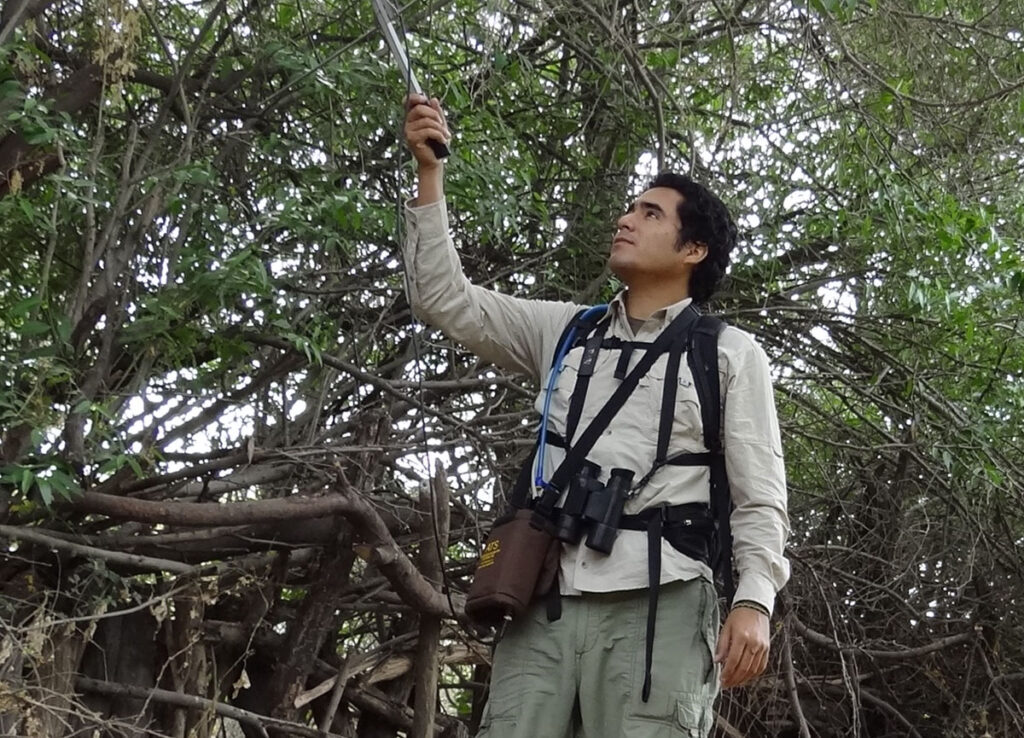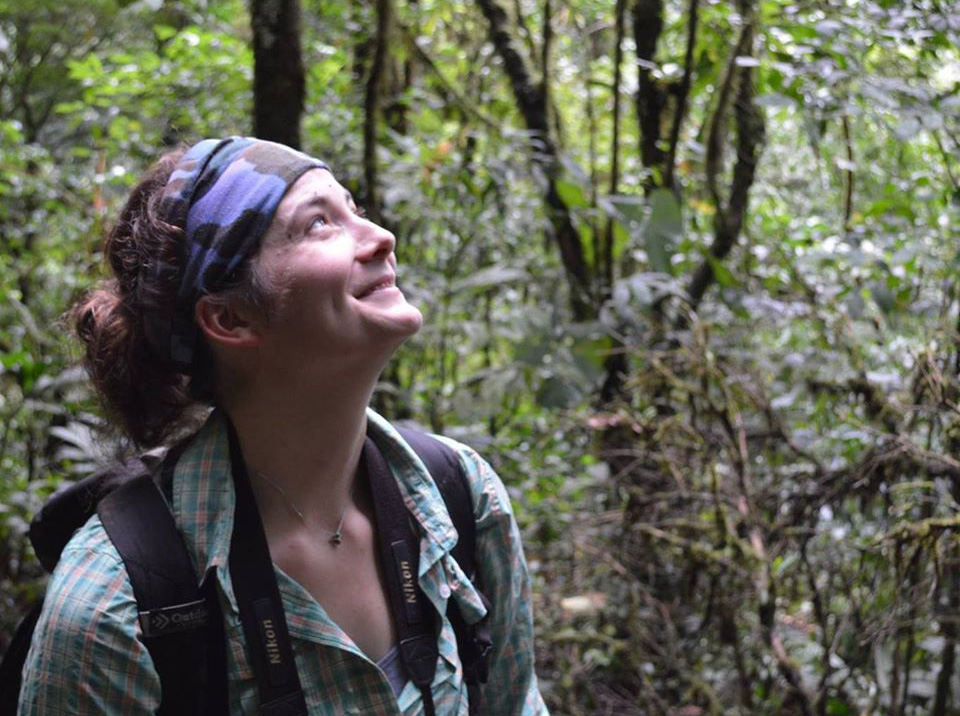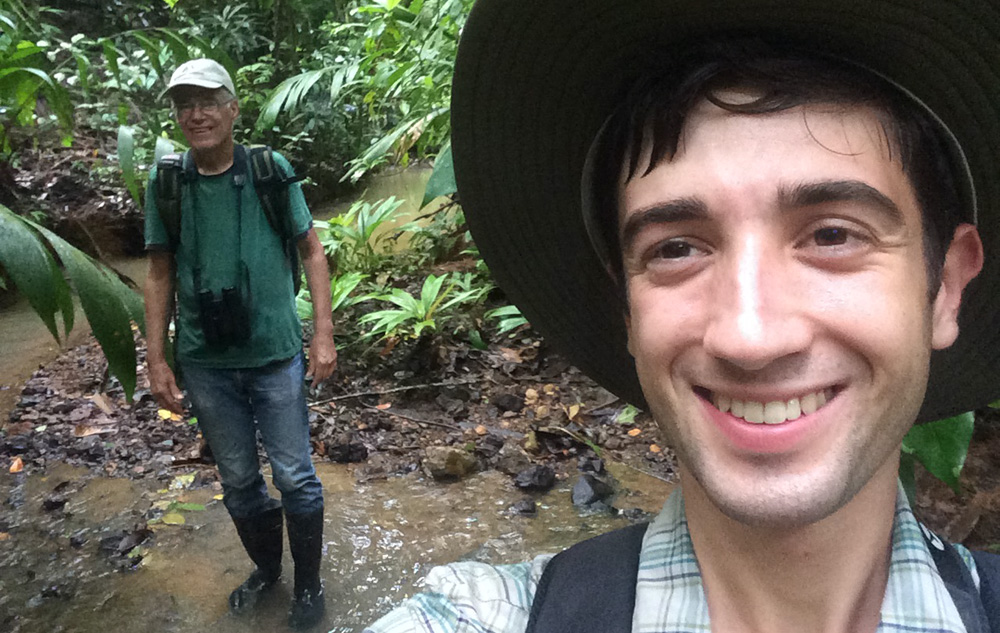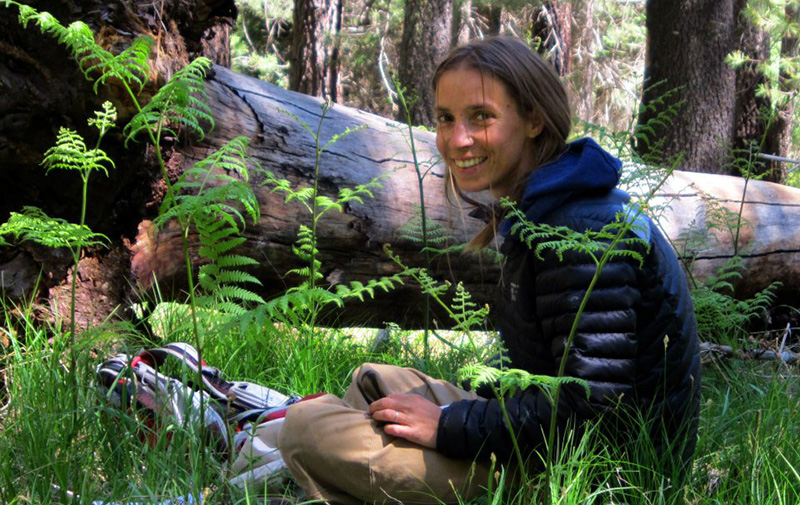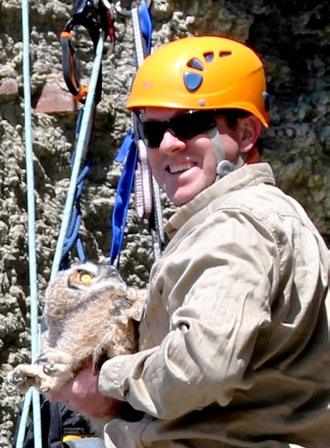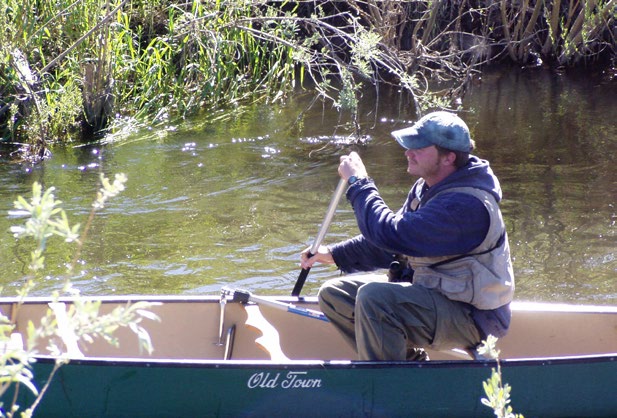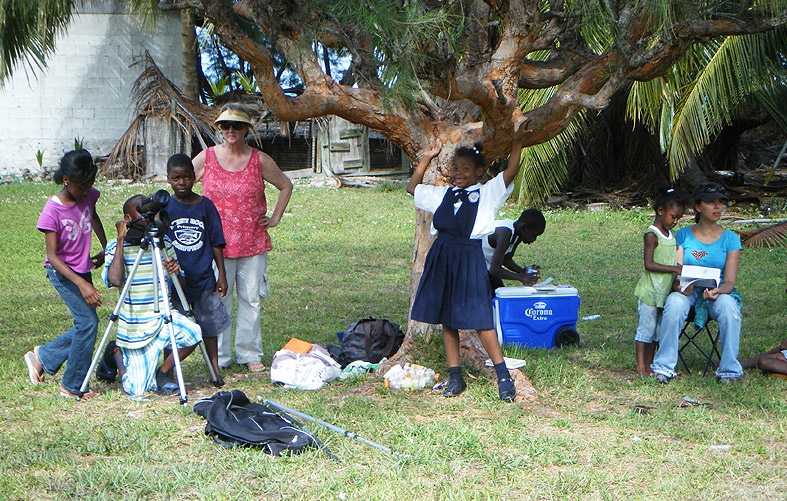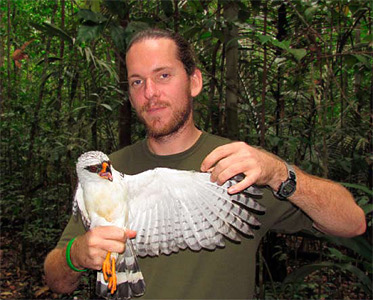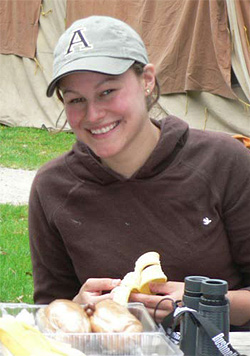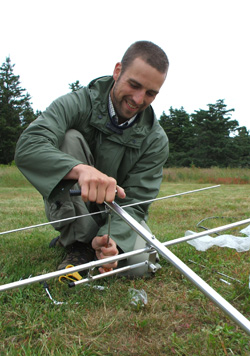The Association of Field Ornithologists gives an award for the best paper published by a student in each volume of the Journal of Field Ornithology. A committee of AFO officers and councilors selects the winning publication based on the quality, significance and potential impact of the research as well as the presentation of the research in written form.
To be eligible for the award, authors must meet the criteria listed below. Collaborative efforts between two or more students can qualify for a joint award. Individuals applying to have their paper considered may be asked to have their research supervisor confirm that the criteria below are met.
The award will be announced at the AFO’s annual meeting and in the Journal of Field Ornithology. The award winner(s) will be invited to give a special presentation of their work at the next annual meeting, will receive funding to help cover the costs of traveling to the meeting, and registration costs for the meeting will be waived.
To be eligible for the Best Student Publication Award:
- The lead author on the paper must have been an undergraduate, M.S., or Ph.D. candidate at the time that the data were collected and analyzed and when the first draft(s) of the manuscript was completed.
- If the lead author has completed the degree on which they were working while doing the research described in the paper, they must have completed that degree no more than two years prior to the date that the paper was initially submitted.
- The lead author/student must have played a significant role in data collection, data analysis, and preparation of the manuscript.
Questions regarding the award and its criteria should be directed to Dr. Diane Neudorf, Chair of the Best Student Publication Committee, at neudorf@shsu.edu.
Award Recipients
Click a year to expand for details on the award recipient:
Antonio Cantú de Leija is a PhD candidate in the Conservation and Biodiversity Lab at the Harte Research Institute (HRI) for Gulf of Mexico Studies, Texas A&M University-Corpus Christi. Antonio is originally from Monterrey, Mexico, and earned his B.S. in Biology from the Autonomous University of Nuevo Leon in Mexico and an M.S. in Renewable Natural Resources from Louisiana State University. His research interests include wetland and waterbird ecology, habitat management, and conservation. For his dissertation research, Antonio is developing models to understand wading bird foraging habitat availability and how it may be affected by sea level rise. Antonio led a meta-analysis study to quantify the degree to which multi-rotor drones cause disturbance in nesting birds, which started as a class project but quickly evolved into a formal research study, winning JFO’s 2023 Best Student Conservation Award. This work was co-authored by four other amazing graduate students and his advisor Dr. Dale Gawlik.
Citation:
Cantu de Leija, A., R. E. Mirzadi, J. M. Randall, M. D. Portmann, E. J. Mueller, and D. E. Gawlik. 2023. A meta-analysis of disturbance caused by drones on nesting birds. Journal of Field Ornithology 94(2):3. [online] URL: https://doi.org/10.5751/JFO-00259-940203
Michelle J. Moyer is a Ph.D. Candidate at the University of Maryland, Baltimore County. This publication was the first detailed analysis of female song in Orchard Orioles and demonstrates how scientific biases can dramatically impact our understanding of complex behaviors, even in well-studied species. She also studies female song in a closely-related species, the tropical Puerto Rican Oriole, and her research aims to answer broad comparative questions about how female song functions and evolves. Michelle has an excellent team of UMBC undergraduates helping with this research, three of whom are co-authors on this paper, and her doctoral research is advised by Dr. Kevin Omland.
Citation:
Moyer, M. J., E. M. Rose, D. A. Moreland, A. Raza, S. M. Brown, A. L. Scarselletta, B. Lohr, K. J. Odom, and K. E. Omland. 2022. Female song is structurally different from male song in Orchard Orioles, a temperate-breeding songbird with delayed plumage maturation. Journal of Field Ornithology 93(1):3. [online] URL: https://doi.org/10.5751/JFO-00073-930103
Sergio Nolazco is a PhD candidate in Ecology at Monash University, Australia. His thesis research is supervised by Prof. Anne Peters and focuses on understanding the evolution of female ornamentation. It combines meta-analysis and original empirical research on the Purple-crowned Fairy-wrens. His broad research interests are in behavioral ecology, parental care, sexual and social selection, and signaling theory. Sergio also has a special passion for the study of threatened South American birds since he was an undergraduate. With a grant from the Association of Field Ornithologists, he was able to fund his study of the globally threatened Peruvian Plantcutters in their seasonally dry ecosystems of northwestern Peru (AFO’s Skutch Award 2011). Sergio won JFO’s Best Student Publication Award for 2020, co-authored by PhD candidate Amalia M. Sánchez from Campinas University, Brazil. Their paper on Peruvian Plantcutters shows how a specialist species can exploit diverse resources, but ultimately it depends on a few unique ones.
Citation:
Nolazco, S., and A. M. Sánchez. 2020. A single species of plant predicts territory occupancy in a population of Peruvian Plantcutters. Journal of Field Ornithology 91(4):331-345. https://doi.org/10.1111/jofo.12349
Elsie Shogren received her PhD in 2020 from Kansas State University. Under the supervision of Dr. Alice Boyle she studied how the abiotic environment influences the scope of sexual selection in Neotropical Manakins (Pipridae) using comparative and demographic methods, population genetic analyses, and behavioral experiments. She is now an NSF Postdoctoral Fellow at the University of Rochester where she is continuing to explore interactions of sexual selection, behavior, and ecology to understand patterns of genomic introgression, reproductive success, and speciation in a hybrid zone of Myzomela honeyeaters of the Solomon Islands.
Citation:
Shogren, E.H., M.A. Jones, B.K. Sandercock, and W.A. Boyle. 2019. Apparent survival of tropical birds in a wet, premontane forest in Costa Rica. Journal of Field Ornithology 90:117-127. https://doi.org/10.1111/jofo.12290.
Max Witynski graduated from Cornell University in 2017 and is pursing a Master’s degree in journalism with a certificate in energy analysis and policy at the University of Wisconsin. He has been involved in migratory connectivity research at the Cornell Lab of Ornithology and Smithsonian Migratory Bird Center, including studies of painted buntings in Florida and North Carolina, American redstarts in Jamaica, and Kirtland’s warblers in the Bahamas, in addition to his senior thesis work on the aestiva yellow warbler. Since 2017 he has been based in Madison, Wisconsin, where his Master’s coursework is focused on science communication.
Citation:
Witynski, M.L. and D.N. Bonter. 2018. Crosswise migration by Yellow Warblers, Nearctic‐Neotropical passerine migrants. Journal of Field Ornithology 89: 37-46. https://doi.org/10.1111/jofo.12237.
Ruth is broadly interested in advancing the conservation of migratory birds by investigating the interactions between behavior, demography, and habitat across multiple spatial and temporal scales. Ruth is particularly interested in addressing conservation in Latin American working landscapes, where she spent the past seven years conducting field research. During that time, she led a multi-national effort to develop a nonbreeding season conservation plan for the imperiled, migratory Golden-winged Warbler and organized workshops and planning sessions with governments, land-managers, and biologists from ten different Latin American countries. She has conducted research on several side interests as well, including the evolution of polymorphisms in Neotropical birds and the impact of forestry plantations on tropical biodiversity. She ultimately hopes to build a research program that informs a hemispheric approach to biodiversity conservation, especially migratory bird conservation, at a research institution or conservation NGO.
Citation:
Bennett, R.E., S. Barker Swarthout, J.S. Bolsinger, A.D. Rodewald, K.V. Rosenberg, and R.W. Rohrbaugh. 2017. Extreme genetic similarity does not predict non‐breeding distribution of two closely related warblers. Journal of Field Ornithology 88:156-168. https://doi.org/10.1111/jofo.12195.
Megan Skrip received her Ph.D. in Ecology and Ecosystem Sciences from the University of Rhode Island in May 2016, with a focus on songbird physiology and the theoretical and practical aspects of science writing and engagement. She is entering her second year as Science Communicator for North Carolina State University’s Center for Geospatial Analytics, where she supports and highlights the center’s interdisciplinary research and education programs through web development, social media engagement, writing, and design.
Citation:
Skrip, M. M., and S. R. McWilliams. 2016. Oxidative balance in birds: an atoms‐to‐organisms‐to‐ecology primer for ornithologists. Journal of Field Ornithology 87:1-20. LINK
Kristen Dillon received her Master of Science degree in Wildlife Conservation and Management from the University of Arizona in 2013. Her research centered on explaining the causes of elevational variation in avian life history traits, with a specific focus on Red-faced Warblers breeding in the Santa Catalina Mountains, AZ. She continued and expanded upon this research for several years after receiving her degree to explore elevational shifts in overall avian life history strategies and the causes of elevational variation in avian species richness. Dillon is currently a Wildlife Biologist with the Bureau of Reclamation in Denver, and works on a number of Threatened and Endangered Species projects in the southwestern United States.
Citation:
Dillon, K. G. and C. J. Conway. 2015. Elevational gradient in clutch size of Red‐faced Warblers. Journal of Field Ornithology 86:163-172. LINK
“Space-use strategies of wintering Ovenbirds in Belize: causes and consequences”was selected as the best student publication in the Journal of Field Ornithology for 2014.
From Ross:
My name is Ross Kresnik, and I was an MSc student in ecology and evolution in the department of biology at York University, Ontario, Canada. Throughout my academic career I always had an interests in migratory bird systems, specifically Neotropical migrants who are experiencing significant population declines. Prior to working on the project for which this award was granted, I was involved in several studies including the first study to place geolocators on Wood Thrush in Pennsylvania, a recovery study of endangered honeycreepers in Maui, and several breeding ecology studies in Ontario. This work led to my interest in examining both migration as well as the wintering ecology of Ovenbirds in the Maya mountains of southern Belize. Currently, I am a secondary school biology and math teacher in southern Ontario, but I remain an active member of the research community with respect to local conservation based projects.
Citation:
Kresnik, R. J. and B. J. Stutchbury. 2014. Space‐use strategies of wintering Ovenbirds in Belize: causes and consequences. Journal of Field Ornithology 85: 274-288. LINK.
Dr. James F. Dwyer is the winner of the Best Student Publication Award for 2013. His paper, co-authored by Dr. James Fraser and Dr. Joan Morrison, is titled “Range sizes and habitat use of non-breeding Crested Caracaras in Florida” (JFO 84:223–233). The article included findings from Dwyer’s PhD research at Virginia Tech, conducted under the supervision of Dr. Fraser. The 58 radio-tagged non-breeders in their study ranged widely, made extensive use of pasture with cattle, and also used adjacent citrus groves, possibly as refugia from socially dominant conspecifics. Dr. Dwyer has been invited to present his research at AFO’s 2015 annual meeting.
Now a research scientist at EDM International, Dr. Dwyer works to develop and publish original research to facilitate environmentally responsible operation of electric utilities. His main focus is on minimizing avian electrocutions and collisions on overhead power structures. He also chairs the Raptor Research Foundation’s Scientific Committee.
This year’s Best Student Publication Committee included: Diane Neudorf (chair), Ethan Clotfelter, Gary Ritchison, Colleen Barber, Dan Cristol, and Dale Gawlik.
Citation:
Dwyer, J. F., J. D. Fraser, and J. L. Morrison. 2013. Range sizes and habitat use of non-breeding Crested Caracaras in Florida. Journal of Field Ornithology 84(3):223-233. LINK.
Lucas J. Redmond from Portland State University is the 2012 winner with his study using complementary approaches to estimate survival of juvenile and adult Eastern Kingbirds
Abstract: Survival rates of young birds during the period between nest departure and their first breeding season is an important but difficult statistic to measure because of low natal site fidelity, especially for long‐distance migrants. From 2002 to 2008, we conducted a capture‐mark‐resight study of Eastern Kingbirds (Tyrannus tyrannus), a Nearctic‐Neotropical migrant, at Malheur National Wildlife Refuge, Oregon, to estimate juvenile (SJ) and adult (SA) survival. The return rate of juvenile kingbirds was high (0.224) and not significantly different from program MARK’s estimate of SJ (0.291). On average, and for both sexes, program MARK’s estimate of SA for birds banded as nestlings (0.64) was similar to that for birds first banded as adults (0.65). Enumeration methods and MARK yielded similar estimates of SA, especially for males banded as adults. We attribute the similarity of resighting rate of birds banded as nestlings to SJ and the similarity of SAestimated using program MARK and by enumeration methods to the high site fidelity of most juvenile and adult kingbirds at our ecologically isolated study site. An independent estimate of SJ calculated using local estimates of population growth and average annual production of young per year suggested that true SJ and SA were probably slightly higher than program MARK’s estimates because of undocumented permanent emigration, especially of birds first banded as adults. Demographic balancing suggests that true SAand SJ were roughly 0.70 and 0.30, respectively. In general, our multiple estimates of SJwere similar. However, program MARK estimates of SJ tended to be lower than those produced by demographic balancing. Because of the difficulty in differentiating permanent emigration and mortality, and the affect it has on empirical estimates of survival, we urge researchers to use multiple methods of survival estimation, when possible, to validate the precision of their estimates.
Citation:
Redmond, L. J., and M. T. Murphy. 2012. Using complementary approaches to estimate survival of juvenile and adult Eastern Kingbirds. Journal of Field Ornithology 83:247-259. LINK
The winner of the annual Best Student Publication Award in the Journal of Field Ornithology (JFO) for 2011 is Melissa Price, a recent Ph.D. graduate from Loma Linda University in California. Melissa’s winning paper was “Population status, habitat dependence, and reproductive ecology of Bahama Orioles: a critically endangered synanthropic species”, Journal of Field Ornithology 82:366-378.
One of the world’s rarest species, the Bahama Oriole (Icterus northropi) is confined to three major islands collectively known as Andros, The Bahamas. The species is synanthropic, preferring to nest in urban residential areas. Very little was known about the ecology of this critically endangered species. Melissa set out to determine the population status, breeding ecology, and potential threats to the Bahama Oriole as part of her dissertation research. Her coauthors, were fellow graduate student Valerie Lee, and advisor William Hayes.
Through extensive surveys, Melissa and her colleagues estimated that the world population of these orioles at 141 to 254 individuals. They found that anthropogenic habitats were frequently used for nesting, but that the orioles preferred nesting locations with adjacent natural areas (coppice habitat). The birds used coppice habitat frequently during the nonbreeding season and for foraging during the breeding season.
Melissa and her colleagues determined that lethal yellowing disease of coconut palms, the orioles’ preferred nesting tree, and loss of natural coppice habitat were the biggest threats to the orioles. Brood parasitism by shiny cowbirds also had a negative impact.
JFO published many excellent student papers in 2011, but Melissa’s stood out in the thoroughness of the study and its significance in highlighting management priorities for this critically endangered species.
Citation:
Price, M. R., V. A. Lee, and W. K. Hayes. 2011. Population status, habitat dependence, and reproductive ecology of Bahama Orioles: a critically endangered synanthropic species. Journal of Field Ornithology 81(4):366-378. LINK.
The winner 2010’s Best Student Publication Award in the Journal of Field Ornithology is Jared Wolfe, Ph.D. candidate, Louisiana State University. Jared’s winning paper was, “Using molt cycles to categorize the age of tropical birds: an integrative new system,” Journal of Field Ornithology 81(2):186-194.
Systems to differentiate age classes in birds are essential for investigating avian population dynamics. Age classification models, which largely depend on molt and plumage criteria, have long been available for temperate species. Unfortunately, these are of limited value in the tropics because they employ nomenclature that does not adequately account for the annual life-cycle events of tropical birds. Jared Wolfe, the winner of the 2010 JFO Best Student Publication Award, has proposed a method to resolve this problem. Together with his colleagues, Jared developed an approach to aging tropical birds that is based on identification of the molt cycle (as unknown, first, second, or definitive) and classification of plumage (as juvenal, formative, alternate, or supplemental).
Use of this system to complement calendar-based models can help improve our understanding of avian population dynamics in both temperate and tropical regions. Jared’s coauthors were Thomas B. Ryder (Smithsonian Migratory Bird Center) and Peter Pyle (Institute for Bird Populations).
The high quality of student publications in the 81st volume of JFO made it difficult to select a winner. However, Jared’s article stood out for its clear composition, contribution to the advancement of field techniques, and potential to illuminate avian ecology and conservation opportunities. Jared, who has operated banding stations throughout the western hemisphere, is currently studying landscape genetics and demography of Amazonian birds in Brazil.
Citation:
Wolfe, J. D., T. B. Ryder, and P. Pyle. 2010. Using molt cycles to categorize the age of tropical birds: an integrative new system. Journal of Field Ornithology 81(2):186-194. LINK.
The AFO is please to present the first-ever winners of the Best Student Publication Award to Lauren Rae and Greg Mitchell of the Department of Integrative Biology at the University of Guelph in Ontario. Their paper, from Volume 80, Issue 4, is entitled “Radio transmitters do not affect the body condition of Savannah Sparrows during the fall premigratory period.” The paper was coauthored by Robert Mauck, Christopher Guglielmo, and Ryan Norris.
Radio transmitters are now used widely in studies of avian field biology. Lauren, Greg, and their coworkers asked if transmitters had any adverse effect on the body condition of Savannah Sparrows. Their study was unique in that they monitored condition during the pre-migratory period when birds attempt to acquire substantial amounts of energy to fuel their upcoming migration. Moreover, they looked at the effect of transmitters not only on adults but also on juveniles, which, because of less inexperience foraging, may be more susceptible to the effects of carrying a transmitter.
Another particular strength of this study was that four different measures of body condition were evaluated, including mass, fat-free dry mass, pectoral muscle depth, and fat mass. After a sophisticated set of analyses, results suggested that radio transmitters had no detrimental effect on the condition of the sparrows.
Lauren completed this work as part of a Senior Honors Project while she was earning her Bachelor’s degree from the University of Guelph. She is currently finishing a Master’s degree in the Cognitive and Behavioural Ecology Program at Memorial University of Newfoundland. Her research now focuses on the impacts of moose on forest bird communities in Gros Morne National Park.
Greg is completing his Ph.D. at the University of Guelph, under the supervision of Ryan Norris and Chris Guglielmo (University of Western Ontario). He is investigating the links between breeding season events, condition, and migratory behavior in Savannah Sparrows of Kent Island, New Brunswick.
Judging this year’s Best Student Paper entries were Reed Bowman, Michael Lombardo, Ernesto Ruelas-Inzunza, L. Scott Johnson, and Kathryn Purcell.
Citation:
Rae, L. F., G. W. Mitchell, R. A. Mauck, C. G. Guglielmo, and D. R. Norris. 2009. Radio transmitters do not affect the body condition of Savannah Sparrows during the fall premigratory period. Journal of Field Ornithology 80(4):419-426. LINK.



